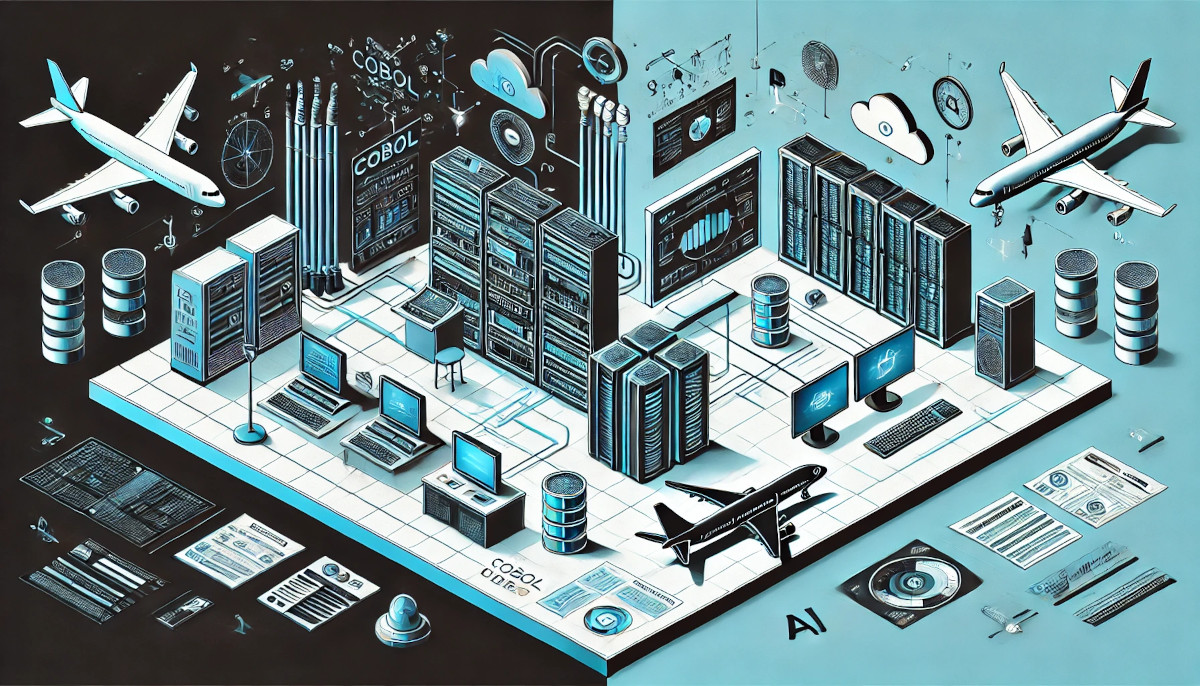
Turbulence Ahead for Legacy Aviation Systems
Despite innovations in passenger experience and aircraft technology, the aviation industry still relies heavily on legacy software—some of which dates back to the 1970s. These systems, often built in COBOL, FORTRAN, or other now-obsolete languages, continue to power flight operations, booking systems, and even safety-critical software. But maintaining them is becoming increasingly unsustainable.
With rising security threats, growing maintenance costs, and stricter regulatory oversight, aviation enterprises now face a pivotal question: modernize or be left grounded.
Legacy Systems at 30,000 Feet
Legacy systems are entrenched in nearly every aviation process:
- Passenger reservation systems still run on modified versions of 1980s-era mainframe software.
- Flight operations and air traffic control platforms, like the FAA’s ERAM, rely on decades-old architectures.
- Maintenance and repair (MRO) systems often operate in silos, lacking real-time data capabilities.
These platforms weren’t built for today’s scale, interoperability needs, or security expectations. A 2023 airline system outage caused by a single corrupted database entry led to global delays—highlighting just how fragile these systems are.
Compliance and Safety Pressures Taking Off
Modern aviation is governed by a maze of compliance frameworks:
- FAA’s NextGen initiative demands real-time flight tracking and advanced analytics.
- DO-178C certification sets strict standards for airborne software safety.
- ICAO’s Global Air Navigation Plan emphasizes interoperability across countries and systems.
Many legacy platforms simply can’t meet these requirements without significant upgrades. Worse, patching them introduces risks of regression, given the limited number of developers who understand their underlying codebases.
Cybersecurity is also a growing concern. Aviation systems are increasingly being targeted by sophisticated threat actors, and outdated infrastructure is often the weakest link.
The Hidden Costs of Legacy Aviation Tech
The costs of maintaining legacy systems go beyond IT budgets:
- Operational Downtime: At major hubs, system outages can cost $5,600 per minute.
- Talent Shortages: With 68% of COBOL developers nearing retirement, the cost of retaining or replacing skilled labor is rising fast.
- Innovation Bottlenecks: Legacy tech slows the integration of modern tools like AI, IoT, and cloud platforms—limiting business agility.
Over time, these hidden costs accumulate into millions in lost productivity, delayed innovation, and missed regulatory milestones.
AI-Powered Co-Pilot: CodeAura’s Role in Aviation Modernization
CodeAura offers a smarter approach to legacy modernization in aviation, using AI-driven automation agents to accelerate and de-risk the process.
Here’s how:
- AI-Assisted Documentation: Automatically reverse-engineers legacy code to produce human-readable documentation—critical for safety audits and compliance validation.
- Intelligent Code Migration: Converts legacy logic into modern languages while preserving business rules and integrating with cloud APIs.
- Aviation-Specific Compliance Mapping: Uses natural language processing to align system functionality with FAA, EASA, and ICAO requirements—saving weeks of manual effort.
- Real-Time Knowledge Base (“Elliot”): Gives technical and non-technical teams instant answers about system dependencies, recent changes, and risk areas.
These capabilities reduce the average modernization project timeline by 45% and costs by up to 38%, making modernization not only feasible but strategically advantageous.
Flight Plan for the Future: Strategic Recommendations
To ensure a smooth landing for your modernization journey, consider these best practices:
- Prioritize mission-critical systems: Start with high-risk platforms such as air traffic systems or reservation backbones.
- Adopt AI-augmented platforms: Tools like CodeAura help preserve tribal knowledge and automate complex refactoring tasks.
- Use phased modernization: Avoid big-bang rewrites. Incremental refactoring allows for faster wins and minimized risk.
- Engage aviation-aware partners: Vendors should understand the domain’s regulatory, operational, and technical nuances.
A Smoother Landing with CodeAura
Aviation’s future will be driven by smart, secure, and scalable digital systems—but reaching that future requires replacing the outdated tech still holding it back.
With CodeAura’s AI-powered modernization platform, aviation companies can fast-track their transformation, ensuring safety, compliance, and agility without the disruption of traditional approaches.
Ready to upgrade your aviation systems for the modern era?
Let CodeAura be your co-pilot on the journey to digital altitude. Book a demo with us.

